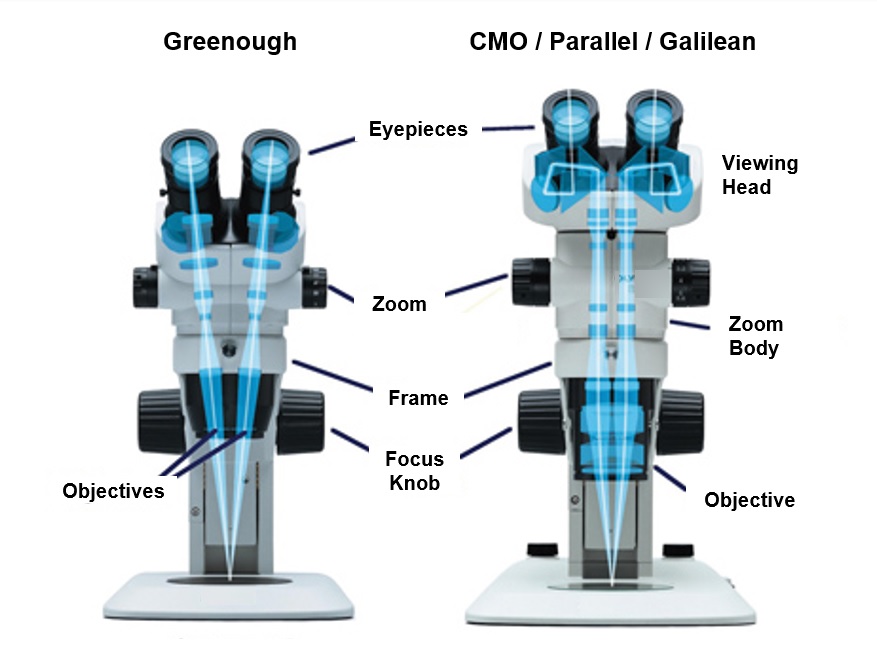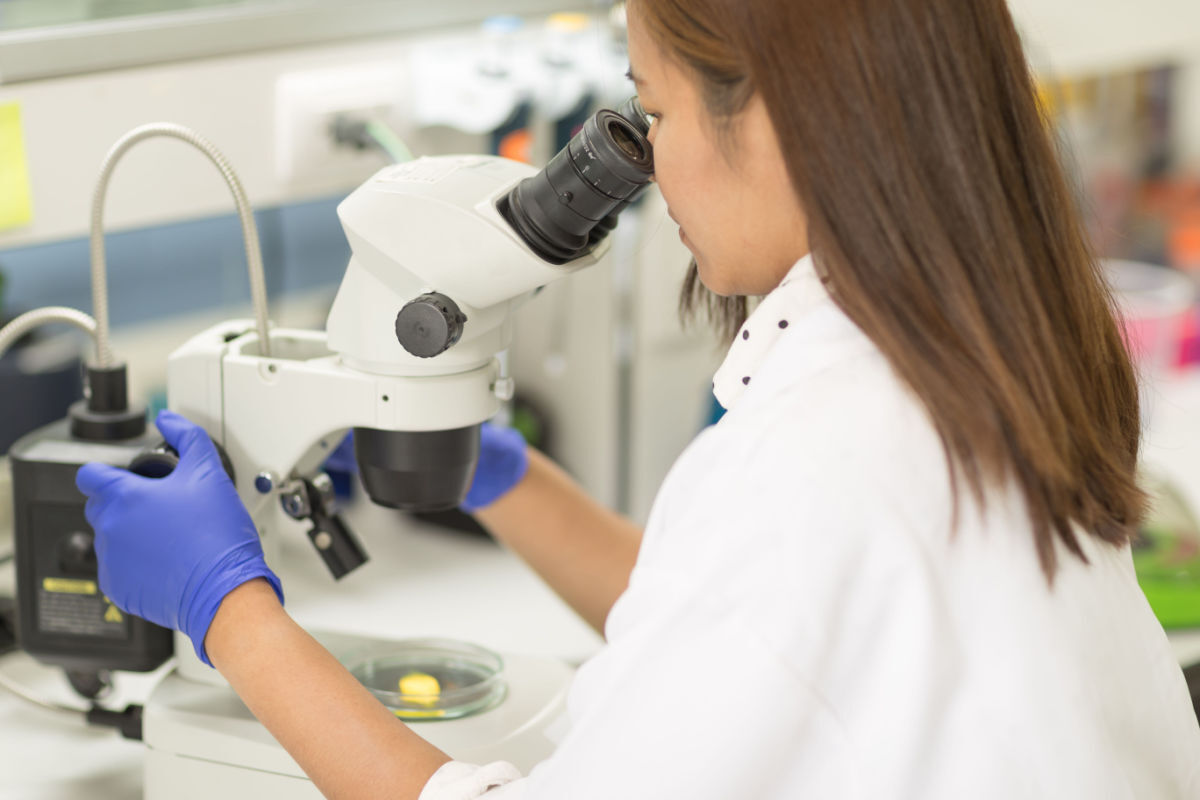There is a wide array of microscopes available for scientists to use, each with their own functions, features, capabilities and applications. The stereo microscopes offer users a variety of unique benefits that aren’t provided by other microscopes. Here is an overview of this unique style of microscope, what makes it different, and why it has found application throughout countless industries.
What Is a Stereo Microscope?
Stereo microscopes, also referred to as dissecting microscopes, examine 3-dimensional (3D) specimens, as opposed to conventional microscopes, which observe what are essentially 2-dimensional (flat) samples on slides. The objective lenses and eyepieces of stereo microscopes are independent, creating two distinct optical paths for the user’s eyes. The optical paths begin at the eyes and converge at the focal position on the sample, thereby generating the 3D view (see the figure below). Zoom stereo microscopes allow adjustable magnification for more precise viewing, whereas some stereo microscopes may only have fixed magnifications. Auxiliary lenses are often available and allow the user to adjust the magnification to better fit their needs and/or the working distance (distance between the bottom of the microscope and the focal position on the sample).
Resulting from the optical design, stereo microscopes are fundamentally different from compound microscopes. The stand of a stereo microscope is almost as important as the microscope itself. The stand can make a difference in how the sample is illuminated: from the top, bottom, on angle, or combinations of these, and the stand and illumination method are often selected based on the sample and the best way to observe it. Transmitted-style stands shine light from underneath and through the sample, which works best with transparent specimens. Incident lighting stands illuminate the sample from above or from the side using a light that is attached to the stand, a ring light, or other techniques. By controlling the angle of the incident light, small details can be revealed and more easily observed by the operator.
Additionally, stereo microscopes generally operate at lower magnifications than other types of microscopes and therefore generally, due to the physics of light and optics, have larger working distances (distance between the bottom of the microscope body and the top of the sample). In combination with the 3D viewing, the large working distances allow the operators more room for manipulation (e.g., dissection), the use of tools and the ability to reposition. As a result, stereo microscopes.
Two Types of Stereo Microscopes?
That’s right, there are two distinct optical designs for stereo microscopes. Stereo microscopes with a Greenough optical design have two completely independent optical paths. The Greenough-design is what is typically associated with dissecting microscopes. Common Main Objective (CMO), Parallel or Galilean optical design stereo microscopes are distinguished by a large objective on the bottom of the microscope’s optical body. CMO stereo microscopes generally provide higher magnification and higher resolution than their Greenough cousins. As a result, CMO microscopes are more frequently used for imaging and documentation than dissection and sample manipulation – the exception is when observing specimens such as embryos, organoids and spheroids.

What Is a Stereo Microscope Used For?
The stereo microscope is superior to compound microscopes in viewing three-dimensional samples and their surface characteristics, making it the tool of choice for tasks requiring direct interaction with the material. As a result, they have many applications across a wide range of industries. In academic settings, stereo microscopes are frequently used for dissections of both plant and animal samples, observation of model organisms (e.g., fruit flies, worms and fish) and other uses thanks to the zoom ranges, excellent depth perception and ease of specimen handling. Stereo microscopes are generally more portable than other microscopes, providing greater convenience and suitability for field work. Furthermore, the 3D viewing offered by stereo microscopes has led to their usage beyond biology dissections — botany, geology, gemology, and industrial applications capitalize on the unique capabilities of stereo microscopes for the observation of surface details and sample manipulation.
For High-Quality Stereo Microscopes and Other Products, Contact ACCU-SCOPE Today
If you would like to acquire high-quality stereo microscopes for your laboratory, reach out to ACCU-SCOPE. We offer various stereo microscope systems, microscope accessories, and a wide range of other products. To learn more about what a stereo microscope is best for your application, contact ACCU-SCOPE for additional information.
